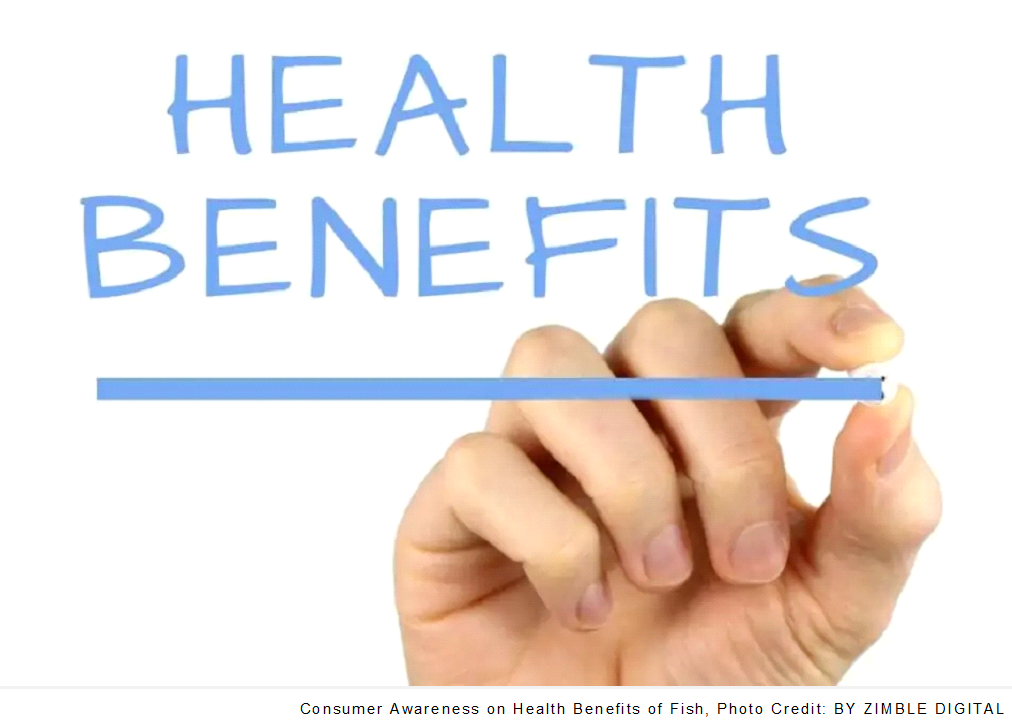Consumer Awareness on Health Benefits of Fish
05 Apr 2024
Opinion: Laxmi Joshi and Saurabh Bandyopadhyay.
Given the current and anticipated changes in dietary choices, livestock and fisheries present a distinct opportunity for growth. Both rural and urban populations’ consumption patterns are shifting, according to NSSO statistics. Based on the amount and pattern of consumer expenditure surveys (many rounds), data on monthly consumption expenditure per capita shows that spending on fish is rising more quickly than spending on other food items.
The consumption of fish provides energy, protein and a range of essential nutrients. Furthermore, fish has a particular role as a source of long-chain omega-3 fatty acids which are important for optimal brain and neural system development in children. Fish consumption also has health benefits for adults. It is an excellent source of many essential minerals such as iodine, selenium, zinc, iron, calcium, phosphorus and potassium, as well as vitamins such as A and D, and several vitamins from the B group. Therefore, it could be a valuable tool in the fight against food insecurity and malnutrition.
Even though there are numerous advantages for human health, the public is mostly unaware of the health benefits of fish and fish products. The NCAER household survey conducted in 24 states reveals that the awareness level is below the all-India average in 12 of the 24 states/UTs. The states with the lowest awareness levels include Andhra Pradesh (39.9%), Telangana (41.36%), Rajasthan (41.94%), and Chhattisgarh (23.94%). About 55% of people are aware of the high-quality protein found in fish when it comes to awareness categories. However, only 26% of people are aware that fish contains important amino acids, vitamins, and minerals in addition to omega-3 fatty acids.
As solutions for increasing fish consumption, almost all (98.1%) of the responding district officilas are in favour of undertaking mass awareness of the health benefits of fish. Hygiene is a great concern in a highly perishable product like fish. The general hygienic status of fish markets and the people associated with the supply chain network across India is not satisfactory. There is a lack of water connections, and physical cleanliness in markets, with unpleasant sights at every corner. Contamination of the aquatic ecosystem and unhygienic handling practices along the fish supply chain can lead to the supply of contaminated fish which will have serious consequences on public health. More than 80 per cent are in favour of constructing hygienic retail fish markets and fish kiosks at strategic locations. Capacity building training programmes (skill training, up-skilling and re-skilling) may be imparted to farmers, fishers, traders and all other stakeholders on the development of skill sets related to hygienic postharvest handling and transportation of fish, adoption of improved sanitary and good handling practices, and other specialized skill sets.
Regular advertisements explaining the benefits of eating fish could be very useful. For example,the American Heart Association recommends eating fish at least two times per week as part of a healthy diet. Attractive advertisements like eating fish everyday help prevent heart diseases, contain hair fall, help rejuvenate skin and immunity, etc. The government should advertise through social media platforms such as Twitter and Facebook to create awareness. The electronic media is now very useful. Fish dishes with recipes should be explained in the media advertisement. At the same time, the media should explain the benefits of fish eating.
As discussed, fishes are perceived as a healthy food containing high levels of digestible protein, with cholesterol-lowering capability. Increasing awareness of fish as a food associated with health and wellness is expected to create a positive impact on its consumption in the coming years. To make this successful, awareness campaigns and consumer education are needed, even though these alone may not be sufficient. Factors like culture, taste, affordability, lifestyle, convenience, etc., play a critical role. Empowering and involving women, individually and in groups, with suitable policy supports, can lead to positive outcomes for them, as well as the fisheries sector in general.
Laxmi Joshi is Fellow and Saurabh Bandyopadhyay is Senior Fellow, at NCAER. Views are personal.
Published in: QRIUS, 05 Apr 2024






